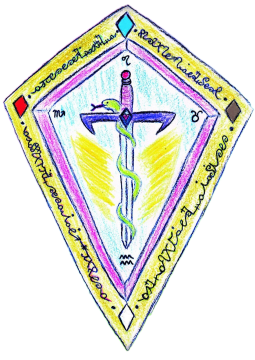
Resources of the Water Realms


03. Aurelia Codes - Sirius Dolphin & Mermaid Lightcodes
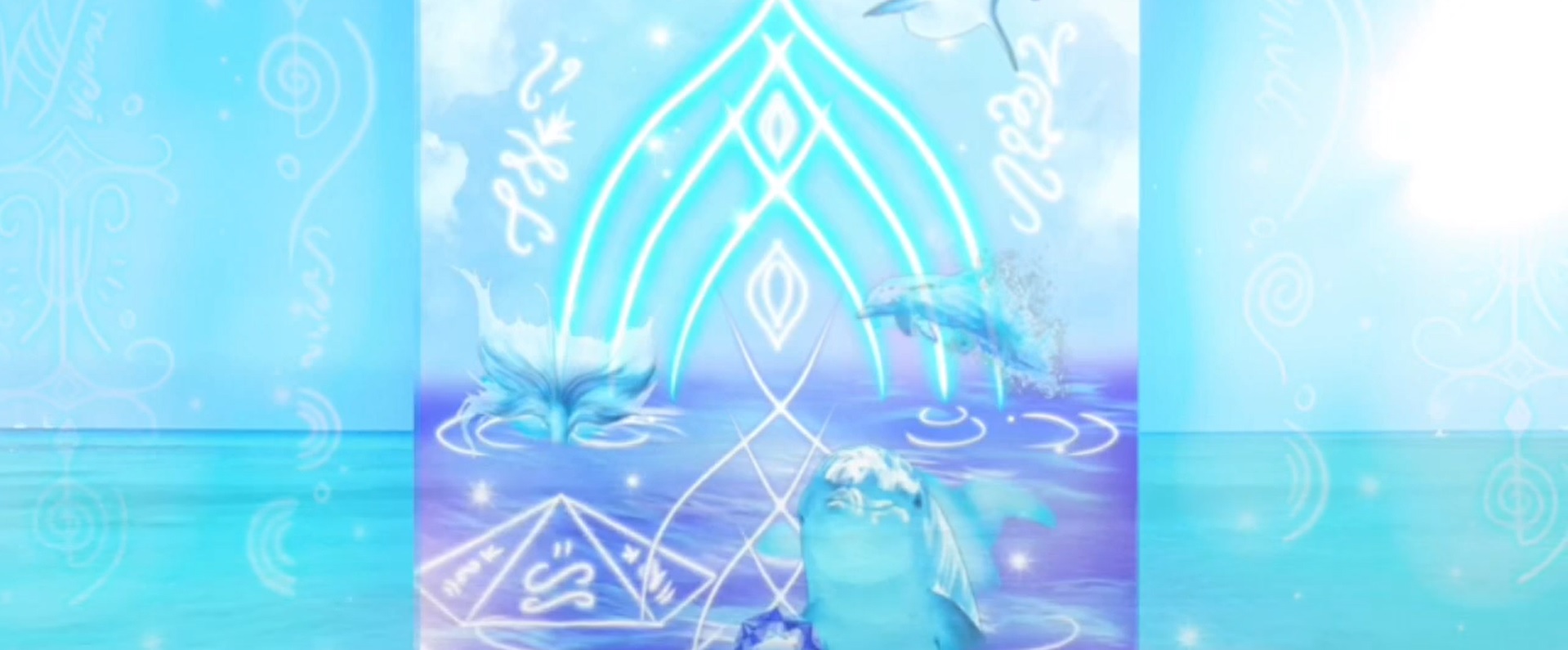
02. Wendy Rule - Dissolve
03. Led Zeppelin - Ten Years Gone
04. Iron Maiden - Ghost of the Navigator
05. Frankie Lane - Swamp Girl
06. Savatage - Sirens
07. Led Zeppelin - The Ocean
08. Iron Maiden - The Talisman
09. Wendy Rule - The Water
10. Shpongle - Once Upon the Sea of Blissful Awareness
11. Bruce Dickinson - Navigate the Seas of the Sun
12. Queen - '39
13. Led Zeppelin - Down by the Seaside
14. Christopher Cross - Sailing
16. Ari Aurelia - The Atlantean Mermaids
17. Ari Aurelia - Ocean Spire
18. Pauline Anna Strom - Aquatic Realms (Full Album)
19. 1200 Micrograms - C of Tranquility
20. Simple Minds - Alive and Kicking
Contents
#1. Three Blind Mice, a Moon Alphabet, and Unlocking the Secret Doorways
#2. The Soul Cages and Navigating the Seas
#3. Water-Babies
#4. Undinae, Asgard, and the World Tree
#2. The Soul Cages and Navigating the Seas
#3. Water-Babies
#4. Undinae, Asgard, and the World Tree


In brief, both "Little Bo Peep" and "Little Tuck" are symbols on the Map of Faerieland for the ones who are blinded to their dream memories or unable to see hidden information to them. I discuss in those chapters how Hermes opens the eyes of certain individuals to Faerieland, and blinds or closes the eyes of others to its mysteries.
Little Bo Peep wipes her eye and cannot find her sheep and becomes lost during her search. Little Tuck forgets all of the dreams that he had upon waking.
The reason these are important themes are due to their connection with "Three Blind Mice" which I am about to explain.
Right between one of the borders of the "Air" and "Water" realms - are depicted three little blind mice who intriguingly may also be wearing raincoats, with one carrying an umbrella.

I feel it is no coincidence that he has drawn the mice right next to the "dock of a bay" (the Bay of the Sidhe, and the Undine Bay), surrounded by ships which generally will land at the dock.
Of course I then came to the remembrance that "dock" can also refer to the part of a tail that remains after the tail has been "docked" or "chopped off". Dock is also a term referring to a reduction - such as when someone "docks your wages".
Therefore, a grand clue was revealed about one of the meanings behind this seemingly nonsensical nursery rhyme.
Hickory (a type of wood) Dickory Dock,
The mouse ran up the clock
The clock struck one,
The mouse ran down,
Hickory Dickory Dock.
Hickory Dickory Dock
The mouse ran up the clock
The clock struck two,
The mouse ran down,
Hickory Dickory Dock
And so on as a sort of counting game....
Now a "clock" is obviously a means by which to measure time.
In the very first pages of my "Book of Water - Vol. I" (written before learning of the existence of the Map of Faerieland), I go deep into the subject of time and memory in relation to water.
Directly quoting now from Pages 8 and 9 of my "Book of Water":
"It is interesting to first note that some of the earliest forms of telling the time were with water clocks – which have been known to exist in Ancient Egypt. These would measure time through a regulated flow of liquid into or out of a vessel where the amount of water was then measured accordingly. The flow of water then is one of the first known methods of measuring the time.
The Hourglass functioned in a similar way to the Water Clock, and these were made with the use of sand. Water clocks would also be used in some ancient societies to determine how long someone had to offer their case in the equivalent to a court of law. Apparently this is where the origin of the phrase “running out of time” came from – as the water would literally run out of one vessel and into another.
The word “horse” too has been thought to be connected to the root word “kers-” which is “to run” as well as being related to words such as “current”, or “carry”.
The word “tide” as applied to the ocean, is very much connected to the word “time” also, as it stems from Old English “tid” which is “point or portion of time, period, or season” from Proto-Germanic “tidi” which is “division of time”.
Chiron and Poseidon both share the father “Cronos” whose name also connects to time. Chiron takes on the centaur/horse form and Poseidon is of the ocean, which each carry their own mysteries in connection to the chronologies of Cronos.
The ocean or the water is of course the perfect connection for any that would take the role of the chroniclers of time and of memory – for water itself has been said to carry memories, or store all the information that it gathers along its path."
Therefore - when we reconsider this nursery rhyme in relation to WATER and to the TIDE and its relation to TIME and to RUNNING - and to chasing the tides and running away from the tides along the hickory dickory DOCK - or the idea of ones "time" being "cut short" - then all of the concepts around the Three Blind Mice - in relation also to the mice who run up the clock - begin to take on a fresh meaning.
We know when we run up the dock of a bay to chase the waves - we are nothing but mice to the size of the ocean who we must run from when the waves come back towards us. And our lives are almost a similar type of game with time - a pendulum of this back and forth motion.
Time slowly sweeps or "strikes" us down - first one, and then two, and then three - and then "another one bites the dust".
Just as "Little Tuck" (meaning "hidden/concealed/blinded/covered") has his memory of the night before cut short - "Little Bo Peep" loses sight of her sheep (who also lose all their tails) and the three Little Blind Mice who run like the currents, also have their tails chopped off - this triad of characters have two main things in common: they are somehow related to being "blind" - and they lose memory or access to their "tails/tales".
When I was first discovering these concepts - I had not yet discovered the Faerie Emblem by connecting Mount Simele to the lake in which the birds had thrown the "poppy seeds" in Japonel (described in the "Air Realms" section). Due to the story of Mount Simele having similarities to the story of "Open Sesame" - and Sesame Seeds being somewhat similar to Poppy Seeds - a dream which told me of the word "Simile" (where two different yet similar things are connected to demonstrate a point) - led me to discovering a line between the two, which further led to the discovery of a tiny red decimal point in the ocean (and the tiny white arrows) pointing where to string the next lines, before connecting the lines up to the four points of the "dwarf treasure key" at the bottom to produce the Hidden Faerie Emblem:
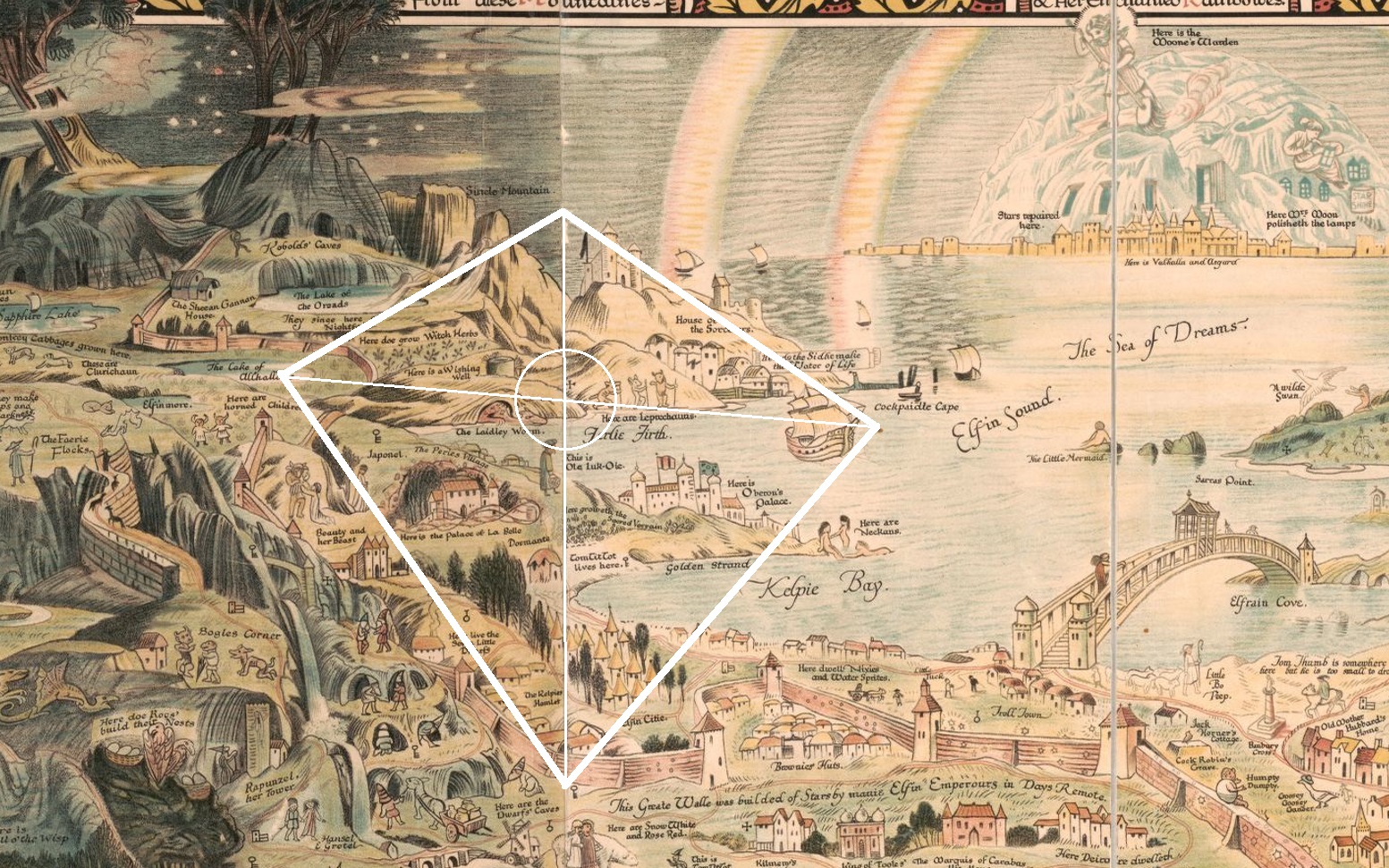
I am quite used to spirits scratching my body - and there was a time they would do it almost every night on my legs, back, hips, and stomach - often right in front of my eyes - so the sensation was not unfamiliar to me, though it had not happened for quite some time.
One of the most significant times that I was scratched by spirits was during the middle of the day when I was having a casual conversation with someone (admittedly soon after having been working on some quite dark music), when suddenly I yelled out to the sensation of three long claw marks scratching into my back. I was wearing clothes at the time which did not at all inhibit the scratch - and my back was bleeding for some time after this, with the scratch remaining on my back for several months:

Regardless of this however, what I am very grateful to them for is that they revealed to me a clue on my own skin to unlock further secret mysteries hidden upon the Map of Faerieland.
While I was stumped to find the answer of what to do with the similarities that I was finding with the various stories related to blindness - the entities very lightly scratched a "V" shape onto my right leg which I immediately felt to be a clue to help me with the secrets of the map:


It was not until later discovering the little dot in the ocean while finding the Faerie Emblem, that I then noticed another little red dot in the ocean very near to "Little Bo-Peep".
It is my belief that this is possibly to guide the positioning of another line for a future riddle which might be related to "Honeymouth Cove".


Indeed Valhalla is watched over by "Odin" who is not only blind in one eye (a significant sacrifice that he made to receive more knowledge), but his son Höðr is completely blind.
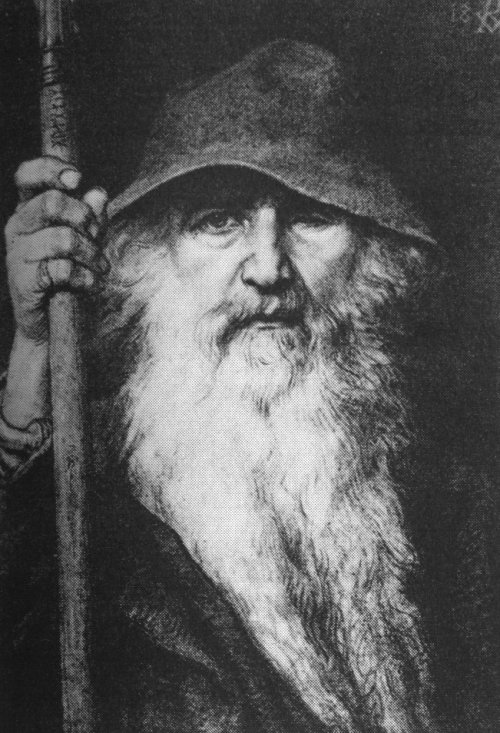
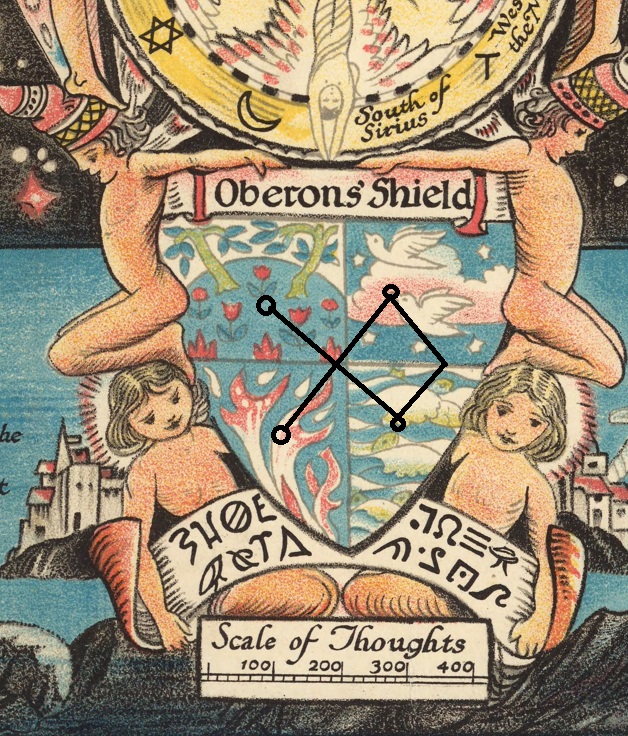
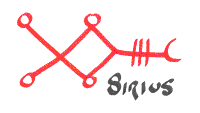
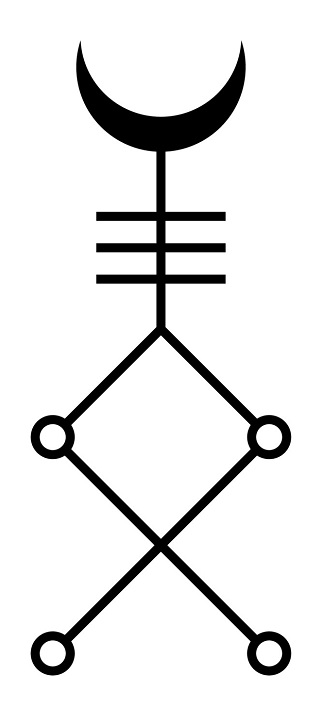
The heiroglyph for "spd" (sharp/pointed/thorn/etc) is a triangle like this:



The answer to that question is solved by the discovery of William Moon (1818 - 1894) who was himself blind (between the ages of four and twenty one, he was blind in only one eye - but then he later became blind in both), and who developed a system of "Moon Writing", or the "Moon Alphabet" which is known as the "Moon System of Embossed Reading" or the "Moon Script" intended to be used by blind people in a similar way to how braille is used.
He had noticed that people had great trouble learning to read the embossed styles already existing at the time, and so created his own Alphabet System.
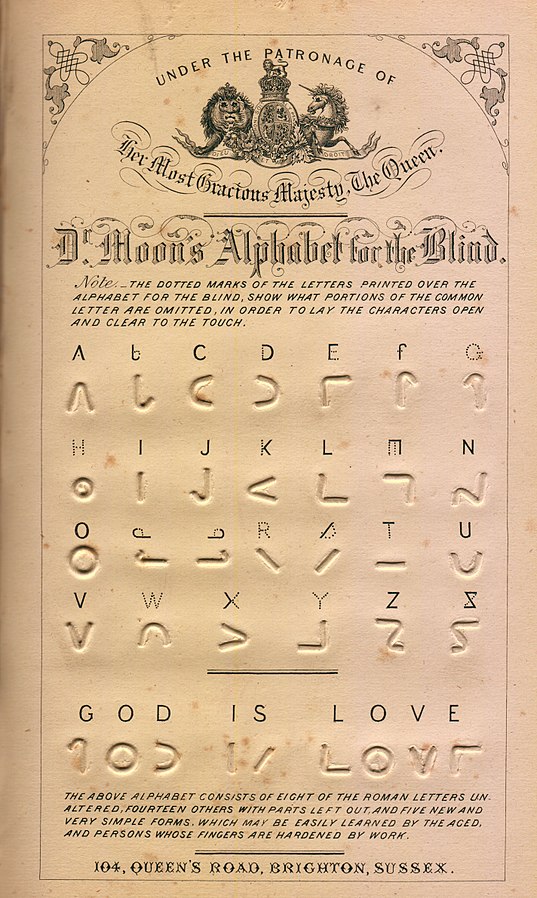

Considering the level of depth, secrecy and intricate nature behind the codes on this map - (not to mention Sleigh's undeniable connection with the faerie people) - it can be imagined that the comprehension of this spell will truly produce very significant and magical results.
In order to perform the spell, one will first need a seven leaved spray of the sacred VERVAIN in the right hand, with the stone called Ematille in your left hand. Then the magical phrase seen upon the following page must be carefully recited three times with your eyes closed:
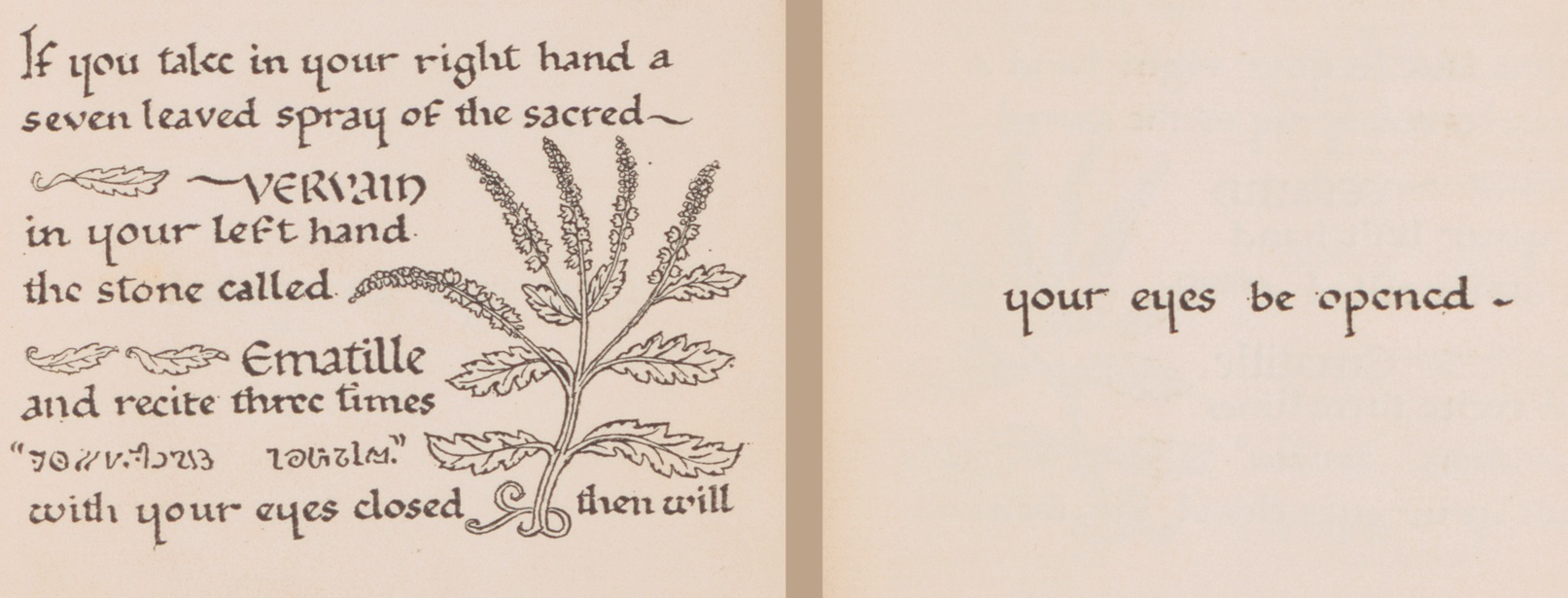
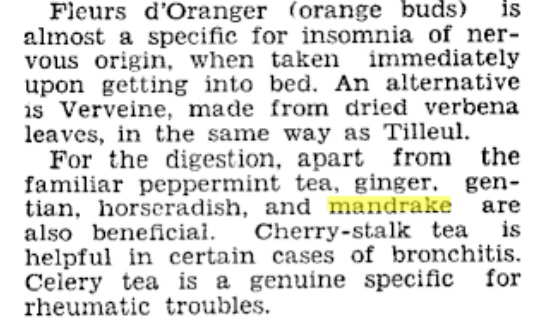
One of the books referenced on the map entitled "Celtic Folk and Fairy Tales" by Joseph Jacobs - intriguingly has a very similar statement in the opening cover of some versions of the book, yet also written in a veiled language (in this case Gaelic)...
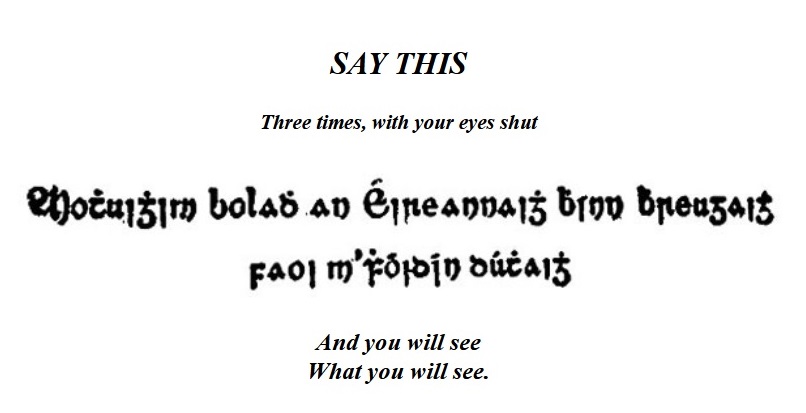
"Mothuighim boladh an Éireannaigh bhinn bhreugaigh faoi m’fhóidín dúthaigh."
A loose English translation of this is also said to be:
"I sense the smell of a sweet, enchanting Irishman around my dear homeplace."
What is of particular interest to me is that in 2012 when I first channeled through the emblem of Faerieland - I was also given several words to write in a faerie script around each corner. These I soon learned could be spoken three times in a particular order with my eyes closed so that I could more easily access the Faerie Worlds. Intriguingly, the first words written on the faerie emblem to be spoken are the words "SWEET AROMAS", as circled in red below:

The reason I say "understand" here is also because the first letter does not appear to look like an "M" in the word "Mothuighim" to me, it appears more likely to be an "e" and an "h".

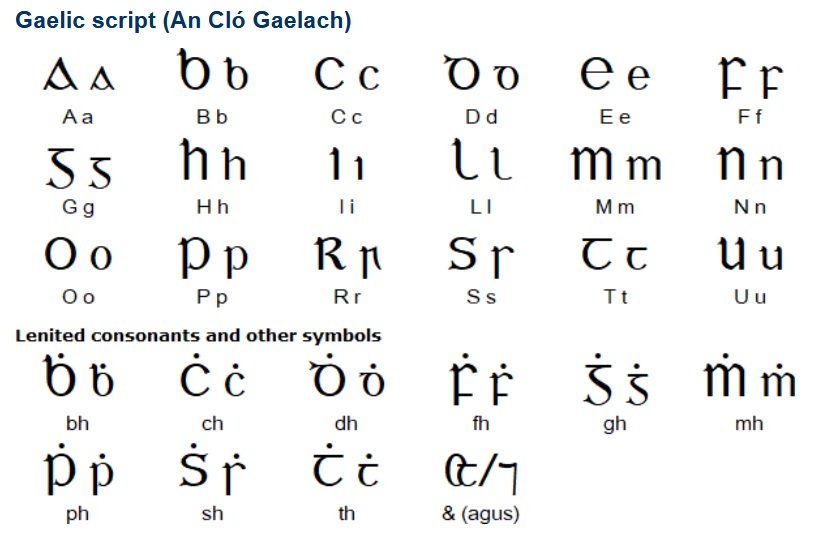
Either way there is a book that I have since discovered which is entitled "Le h'ais na Teineadh" ("with the axis of the fire") by Douglas Hyde. And in this book, a potential origin of the phrase is found in Section 3. King of Ireland where it is written with an "M".
In this story (which is difficult to translate perfectly to English), it appears to describe symbols perhaps representing the five senses. The King's son meets a little green man who is traveling to the east to find a particular woman - and a deal is made where one of them will win the "first kiss to his wife, if he left her" (TASTE). Then while traveling together, they meet a man with a gun in his hand who is a hunter. (SIGHT). Then the three of them travel together and meet a man "with his ear to the ground, listening to the grass grow" (SOUND). Then the four of them travel together and meet a man with half a foot/leg on his shoulder because he does not want both feet on the ground (a little lost in translation but maybe representing TOUCH). And finally the five of them travel together and meet a "blower" with "a finger on his nose" (SMELL). Perhaps there are connections with the elements rather than the senses, or both, and it is possible that some of these have been lost in the unusual translation from Irish to English. It is uncertain to me what the last one they meet, who breaks stones, would mean, though all of these are only some speculations to ponder further or trigger certain thoughts.
Eventually when they are looking for a place to stay, they visit the castle of a giant, and the little green man goes ahead alone and signals the giant with great noise from a fighting post. It is then the giant who says "I SENSE THE SWEET SMELL OF THE IRISHMAN, LYING ABOUT MY COUNTRY" or "I FEEL THE SMELL OF THE SWEET IRISHMAN, LYING ABOUT MY COUNTRY").
Perhaps this is actually in the sense of the giant wishing to eat him - as we are familiar with from the story of Jack and the Beanstalk - though that is not so clear in context of this story.
The green man threatens the giant, telling him that he is not a sweet lying Irish man, but that his master is not far away and will cut off his head unless he does as he says. The green man then shapeshifts and grows as big as the castle. The giant then asks him if his master is as big as him, and when he replies "yes and more", the giant becomes afraid and asks to be hidden and will give him whatever he wishes.
He then throws the giant into the mouth of a snake and proceeds to take over the castle with all of the travelers for the night.
Each time they stay at a place the story explains that they spend "one third" of the time with alertness/diligence, a third with carelessness, and a third with rest and deep sleep.
It is possible that this is a key for the spell in which one closes their eyes and speaks the words three times - for upon attempting this myself, there was at first little that occurred in my state of "alertness" - however when I passed in to the state of carelessness and pre-sleep (right as I was beginning to forget what I was doing), I strangely began to smell a very unique and most unusual but sweet smell directly in my nostrils. The second that I smelt it so clearly, my senses heightened and my heart raced in anticipation as I spoke the words aloud again, this time saying "in my house" rather than "country". I could feel the presence of a being in the room with me, and it felt as if one portal had unlocked and opened up and that the being was very much aware of my presence. To fall into actual deep sleep, is perhaps a further key.
There are three incidents in the book in which the giant repeats the same words written in Gaelic in the opening pages to Joseph Jacob's "Celtic Fairy Tales" book. It should also be mentioned that the little green man appeared in response to the main characters generosity in giving half of his money to the poor who could not afford what they needed at the time.
Might these words call the same little green spirit to our homes, or could we then be robbed, as the giants were? Perhaps it depends on the intention and purity of our heart and request.
It is a fascinating story worth pondering, and worth experimenting with when falling to sleep.
The answer to the earlier mystery found on Bernard Sleigh's Map however is more likely to be understood upon the culmination of having read the majority (if not all) the books upon the map, and comprehended their connections - unlocking their codes piece by piece - to lead to the understanding of Sleigh's words in the Guide to the Map of Fairyland (being a key which is linked to the words that are on Oberon's Shield). It is also potentially necessary to have traveled to the faerie worlds in trances to begin unlocking some of these mysteries - for I would never have personally figured out at least half of the codes hidden upon the map to this point without having first had the context of my 40-Day Journey into the Faerie Realms.
It was due to this journey for example that I immediately questioned the fact that he had not drawn the fence around the Air World to the Bridge of Dreams connected with Never-land. This concerned me due to it defeating the entire purpose of the enclosure. It was the mystery of why he had drawn it in this way which caused me to notice "Little Bo-Peep" to one side, and "Little Tuck" to the other - and to start searching for the meaning behind their mystery.
If I had not been concerned of the Air World's enclosure appearing to be "open" in this area - then likely I would never have understood why Little Bo-Peep had lost all her sheep and their Fairy Tales - or why Little Tuck forgot all of his dreams (meaning any who did sneak in via this route would soon forget what they saw or not be able to make any sense of it). Likewise, had I not already channeled the Faerie Emblem from Faerieland (10 years prior), then I would not have very likely been able to join all of the dots required to find it - nor comprehended its significance even if I had done.
I also would not have thought it strange to find Pegasus in the Fire Realms instead of where I had found him in the Air Realms - and would never have discovered the mystery of the portal between these two worlds.
If I had not already been taught by the fairies the formula of "fire to air to water to earth" which is a very non-intuitive order - then I would also have never discovered the symbol of "Sirius" hid upon the shield. Nor would I have even recognized or found the symbol if I had not previously been guided by the fairies to create a talisman using the same star symbols.
Quite probably I would not have ever thought to divide the map into sections of elements in the first place, nor suspected that each of the works within those sections corresponded to the same elements.
Especially considering the anomalies which I was only familiar with from my first adventures.
I would never have solved the mystery of Fridolene and his connection with Hermes either, had I not interacted with him first and become familiar with his ways and overall nature.
And if fairies had not scratched the V triangle into my leg, and given me several dreams to reveal the whereabouts of various treasures upon the map - I would never have even thought to discover their clues or somehow discover that a man called Moon designed an entire rare alphabet system for the blind which would assist the unlocking of these strange faerie letters.
In fact the map would likely have appeared extremely overwhelming to me if I was not at all familiar with its locations or general properties from having already traveled these routes upon it many times in other dimensions (I had read almost none of the books on it before).
For this reason, I can only assume that the hidden meaning behind the words for this spell - conceal truly magical results within it - destined for this very time and this present space. And that is why it feels very important to work towards the comprehension of this great mystery!
As I explained in my "Book of Water - Vol. I", "It became clear that the device somehow assisted one to take advantage of the magic found within each moment in very specific ways, which had the ability to call in beings or take pathways that were only accessible at certain hours, times, seasons, and moments, which it easily revealed. This is not entirely unlike the “moon-letters” found in Tolkien's books which are ordinary runes that can only be read when the light of the moon shines in a very specific way. Some of these runes being so elaborate as to only allow the reading of their messages under the light of the same shape of moon, or at the exact same time of year, as when they were first written."
Going back to the codes now - there are these two main letters found upon Oberon's Shield which are most certainly from the Moon Alphabet - though will require their own challenge:
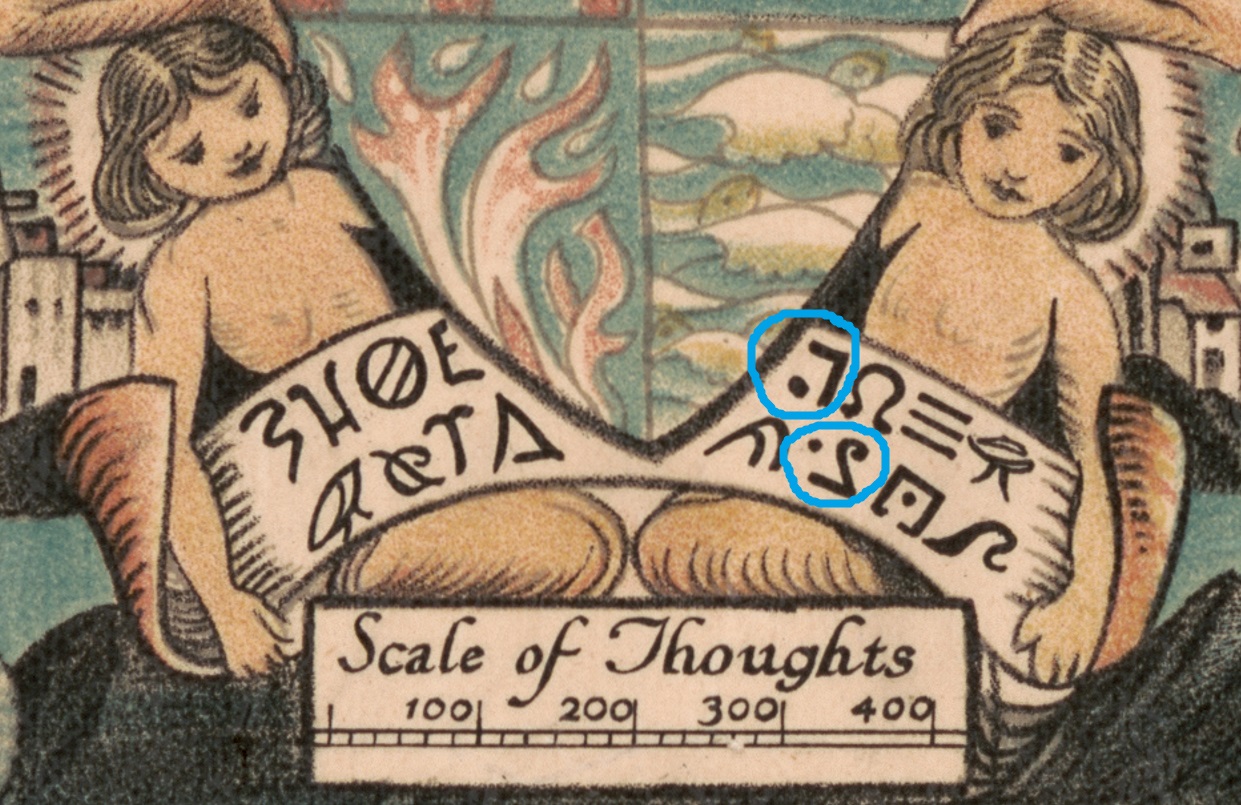
Here I have circled all the possible letters which may be meant by the "L" and "S"-like symbol (depending which way the compass is turned). Sleigh has cunningly chosen symbols here which can mean entirely different letters depending which quarter they are turned to, thus potentially enabling whole different words to form with the same letters for different realms.
It should also be mentioned that this alphabet can also at times translate into entire words from the use of one single letter (or certain combinations of those letters), requiring us to become familiar with the way that it works, if we wish to comprehend the deeper meaning.
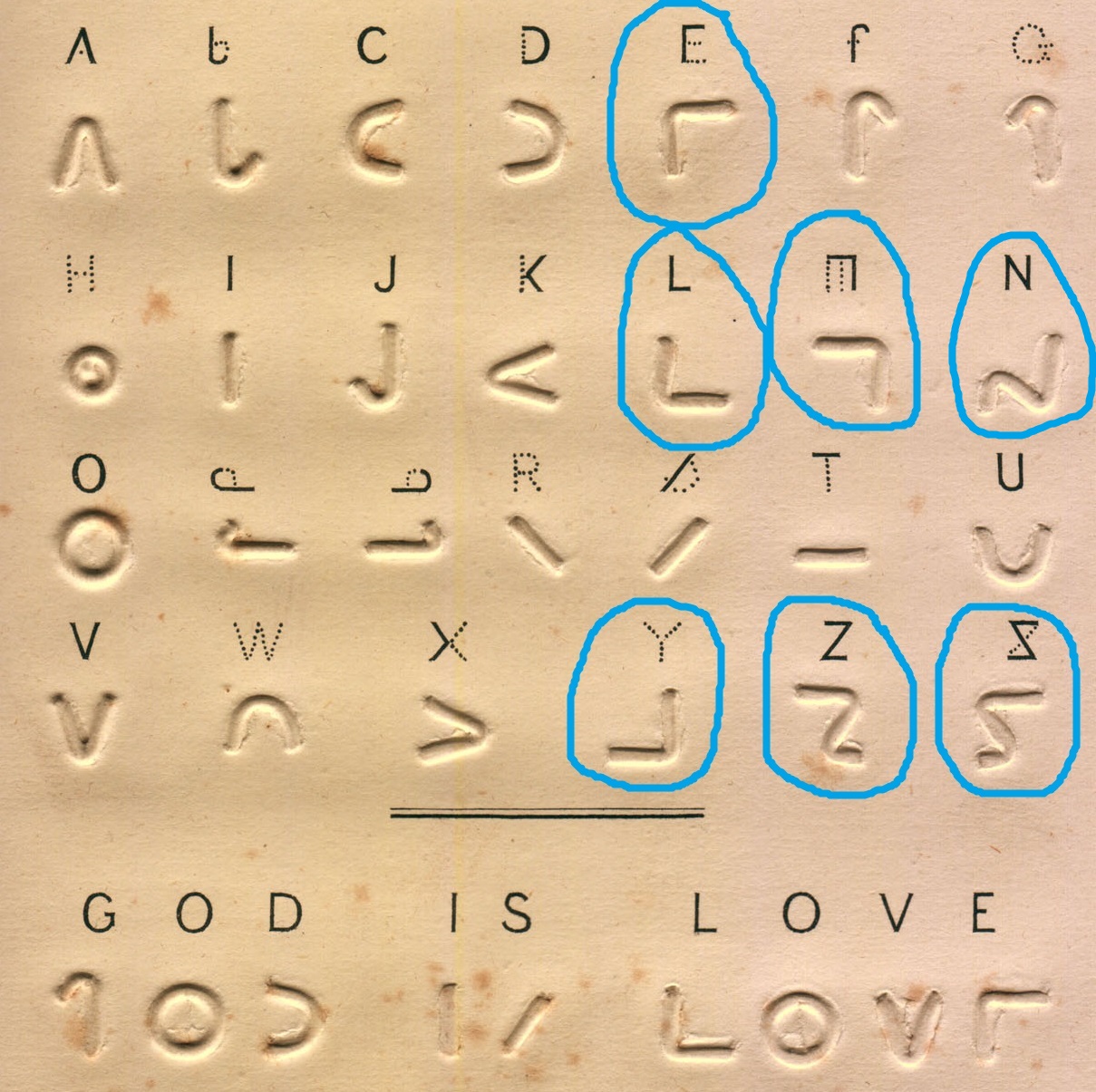
It is recommended to watch that video to more deeply comprehend some of the connections which would be very difficult to summarize here. The video likely has several errors now and was made a very long time ago, though it still summarizes much relevant cues of information.
Considering that we have interpreted the Sirius symbol which appeared above the shield to mean "OX", it is possible it could also hint towards this form of writing. The problem is that if we do not know which way up the writing begins with - or whether he has made some of the letters upside down with others up the right way, then we could easily be led astray quickly.
In standard Moon Script, short texts will be written from left to right - while the longer and embossed texts will take on the Ox-Ploughing form, where there is a parenthesis of sorts to guide the finger down to the next line which is then read from right to left. In that case, the glyphs are usually not mirrored - though we obviously have to be open to all possibilities in cracking this code. One can imagine how confusing it would become if a left "L" means a different letter to a right "L", and then one had to switch them every time they read from right to left - so the likelihood is that unlike some boustrophedon texts, these characters are not mirrored when reading either from left to right, or right to left - but remain just the same.
We have been given two letters beneath the shield - with a total of seven possibilities of what they might mean.
Those same two letters are also found in each word on the other key we are deciphering. It is likely that several of the other letters in these words are using the Moon Code too, though potentially tilted/rotated/mirrored etc. In this case the "S"-like letter, is rotated 1/4 clockwise from what it was shown beneath the shield (the decimal point is still on the same side too).
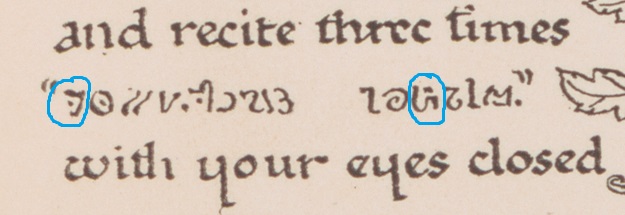
There appear to be "old school digits" which are what was presumably originally used with this alphabet system for numbers - and then a newer system entitled "Staffs Maths Digits".
It is not clear to me when these Staffs Maths Digits were added to the alphabet, or if it was even in Bernard Sleigh's time or not - but the digit which they use for number "eight" stood out to me for its resemblance to the Sirius / Othala Rune discovered upon Oberon's Shield:

The old school digits though (besides counting numbers as the letters themselves) consisted of lines on an angle with a little tick at the end of them.


Considering that the Hickory Dickory Dock Clock reads: 2:55, this is perhaps not far-"fetched":

It is not dissimilar to this symbol which potentially means "AND", "N", or "Z":

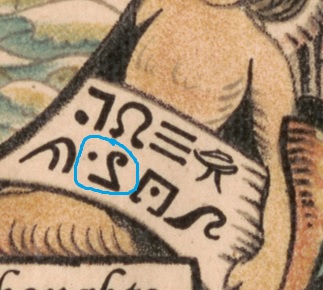
As soon as I wrote the letter "M" from the Moon Alphabet, I saw an image flash into my mind of the "EHWAZ" rune which is supposed to mean "horse" and has been seen as two horses with noses touching - and it also reminds me of certain beings holding hands in trust/love:


The name for this city of the West, connected with the cauldron in Irish literature is "Murias".
The letter "M" in Greek is called "Mu" and is derived from the Egyptian Hieroglyphic symbol for water.
Morgan le Fay also appears to have clear connections with the water. A "Morgen" is known as a water spirit, perhaps from Mori-genos or Mori-gena for "sea-born". There is also a princess transformed into a mermaid in Irish Literature called "Lí Ban" whose given Christened name when she came ashore was "Muirgen" meaning "sea born".
There is a feast day for her on January 27th in Ireland, and she was once human when her father's kingdom flooded and drowned her entire family - but her and her dog only survived.
She spent the next year living beneath the lake with her dog after she had begged Goddess Danu to transform her into a salmon so she could survive with the fish - and her wish was only half granted for she was instead turned into a mermaid, and her dog into an otter. She lived in an underwater cave and was known for her beautiful singing.
Morgen le Fay is said in the Vita Merlini to be very beautiful and to understand how to heal and cure the sick - knowing all the secret herb mysteries. She can also change her shape and fly like a bird upon the air ("and when she will she slips down from the air onto your shores"). She is also supposed to be very good at mathematics.
If it is indeed true that she has these strong connections with the ocean/sea - it is also quite possible that she has connections with the moon or those of the moon (who seem deeply interlinked with one another).
But if indeed that first "L"-like letter does represent "M", then two of the letters next to it that are found on Oberon's Shield - appear to be of Greek origin.
The "Omega" (Ω) and the "Xi" (Ξ) symbols.


Interestingly, the Old Nordic word "øx" means "axe" in the sense of something "pointed" and "sharp" - as we have seen earlier with the Egyptian Goddess of Sirius referring to "pointed" and "sharp" also.
Samekh is the 15th letter of the Hebrew Alphabet (often drawn as a closed circle such as Ouroboros and representing the "S" sound). 15 is also a number often associated with the Devil - such as in Tarot Cards.
If indeed that first letter is an "M" however - followed by "oks" - this would spell "MOKS" or if read backwards this would be "SKOM" - neither of which appear to mean much in this order (SMOK would be dragon/serpent, MOSK would be mosque - but rather it is SKOM and MOKS).
But is there a clue in the first three letters shown on the other code on the guide to the map?


What is needed to consider here though is that the following symbol is not up the right way, which may therefore imply that the "L"-like letter interpreted as an "M" is equally up the wrong way:
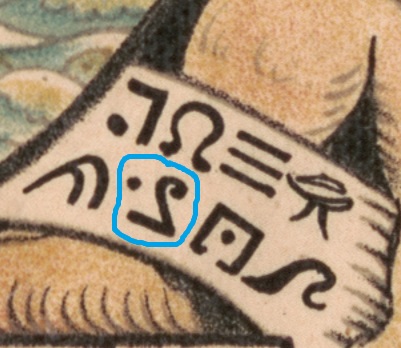
#1. Flip Horizontal, Rotate 90 Degrees Left = "N":







Therefore we have these main possibilities for the interpretation of this letter, it is either:
"M", "L", or "Y", with some potential to be "W" or "E".
While the other letter can be "N", "Z", or "AND", with some potential to be "S", "2", or "5".
If we assume that Omega does = "O", and Samekh does = "KS" then these are the possibilities (keeping in mind that we do not know the "eye/ufo" looking letter in the word, but which could be "e" or "i" - as merely a guess and starting from Left to Right:
#1. LOKS-
#2. YOKS-
#3. MOKS-
#4. WOKS-
#5. EOKS-
With some lesser possibilities of LOSS-, YOSS-, MOSS-, WOSS-, EOSS-.
And some potentials of "LOK-", "YOK-", "MOK-", "WOK-", "EOK-" - or with an "X".
Of course in all of these cases we are missing the final (or first) letter, depending which way it is read - and assuming that it is a stand alone word written in order.
If read from right to left (missing the first letter) we would have:
#6. -SKOL
#7. -SKOY
#8. -SKOM
#9. -SKOW
#10. -SKOE
We must also not forget that entire words can sometimes be represented by a single letter in Moon Alphabet, also adding these possibilities:
#11. MOREOKS-, -MOREOSS, MOREOK-, -MOREOX
#12. -SKOEROM, -SSOEROM, -KOEROM, -XOEROM
#13. YOUOKS-, YOUOSS-, YOUOK-, YOUOX-
#14. -SKOUOY, -SSOUOY, -KOUOY, -XOUOY
These are the main possible combinations - if the middle letters are "O" and "KS".
Some possible words of interest that stand out upon seeing these are: "MOKSI" and "LOKSI" (if the eye is to represent an "i" letter) - the latter being a "Chickasaw" word for "TURTLE", and "combination lock/padlock", as well as "Lady Bug".
Moksi as "Moxie" appears to be much less-likely, but does refer to what was once a medicine for the brain (Bernard had a brain aneyrysum with a resulting trepanning operation leaving him with half of his brain remaining as the age of 24, while the other half continued to grow), and this medicine was later made into a popular soft drink. Moxie was peculiarly said to contain a "secret ingredient" (from a rare and unnamed South American plant) which could be used as a "panacea" (a universal remedy of sorts that might cure all diseases or prolong life indefinitely - sought after like the Philosopher's Stone). It has later been claimed that this was merely "gentian root" - though it is possible in my mind that the creator of this drink was utilizing more secret ingredients than this and that it is lost to obscurity. Augustin Thompson, the creator of the drink also wrote a book entitled "The Origin and Continuance of Life".
Perhaps the following passage from a New Zealand Herald Newspaper dated April 30 1887 may also have some relevance here on the topic of mandrake, longevity, and bitters drinks:
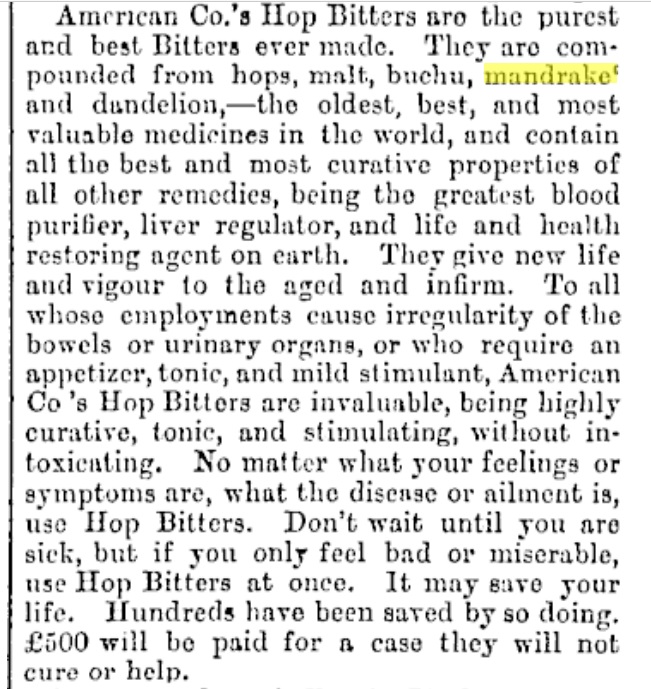
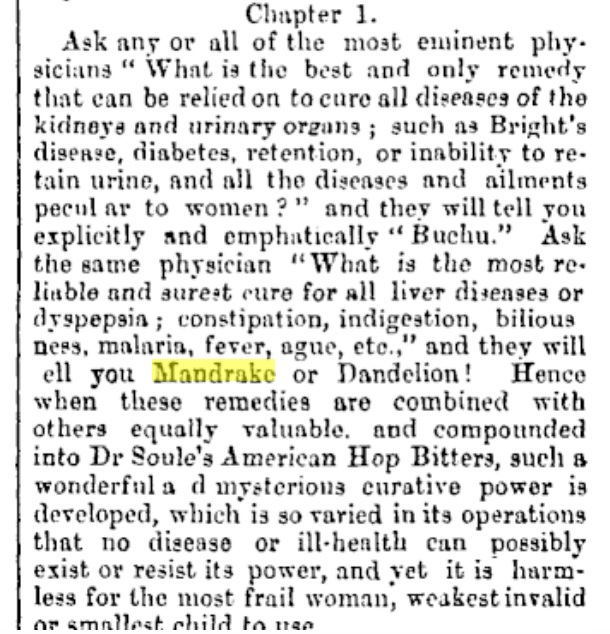

"MOSSI" refers to a Gur ethnic group native to Burkina Faso who speak the Mooré Language. The interesting thing about this language - whether it has any intended relevance to cracking these codes is that their alphabet has the addition of the "Latin Episilon" (ɛ) which is also shown on Oberon's Shield (albeit backwards) and on the spell in the Guide to the Faerie Map.
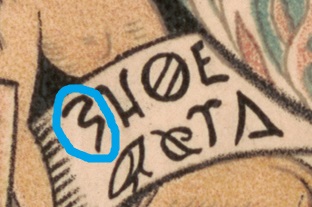

However, also in the Mooré Language they use a letter V with a little hook, like this: "Ʋ". It is based on an italic form of "V" even though it more closely resembles "U". This is interesting because the last letter in the words above (which looks like an "M" with a hook like a "y", could also be an upside down Double-V ("W"), with a hook on it to indicate this possibility.
To achieve this similarity however - all of the words would have to be flipped horizontally and by 180 degrees which would change the meaning of "L" at the beginning to "Y":

The "V" with a hook is sometimes written as "Ʊ" - being the upside-down Omega symbol, also known as the Horseshoe Symbol. It is possible that Sleigh could have used this, which would represent presumably a "V" or a "U" sound rather than an "O" sound.
The other possibilities of the initial word we were pondering could be such things as "LEXI" - if an "X" was used instead of the "KS". This is a name meaning "Defender of Man" but also can refer to words, speech, vocabulary and so on (as in "Lexicon").
SKOLE can also mean "school" or a "harvest/cutting" or Viking "cheers" before drinking (Skol).
LOKI (or a play on words with "Lock-Key") is the Norse god of mischief and trickery, possibly connected with themes of light or flames in his name.
Possibilities #6 - 10 above seem very unlikely to form useful words.
The lesser possibilities are also not particularly useful - besides informing me of the existence of "Epsilom" and the Horseshoe Symbol.
And out of numbers #1 - 5 the only one with any real semblance of meaning is really LOKSI. This can also be spelled "LUKSI" in the more archaic form but it still means "turtle/tortoise". Considering that its very meaning is drawn right next to it on the shield and that turtles are not the first symbol one might think of to draw when representing "water" - may indicate a high likelihood towards this interpretation.
Also considering the relevance of the nursery rhyme "Hickory Dickory Dock" in finding any of these mysteries to begin with - it may be of further interest to note that the Chickasaw were once divided into two groups, one being "Imosak Cha'a'" which means: "Chopped Hickory".
If Loksi/Luksi is the correct interpretation then there still remain two possibilities of rotation and flipping, because the letter "L" is the one which appears when you flip the original picture horizontally and rotate it 90 degrees to the left. But it is also the same letter which appears when you simply rotate the picture by 180 degrees without flipping it.
We have therefore potentially narrowed it down to these two options rather than the three - which would also eliminate the "Z" for the other letter - narrowing that letter down to only "AND" or "N" - that is, if the pattern continues.
If the spelling is "LOKSI" then only the "L" has to be flipped 180 degrees - but if the spelling is "LUKSI", it means all four letters were flipped 180 degrees.
One of these, the "S" is the same whichever way you flip it. The "Omega" symbol becomes the horseshoe "U" when flipped, etc. If they are all flipped 180 degrees, then they must be read from Right to Left. If only the "L" is flipped, then the words must be read from Left to Right.
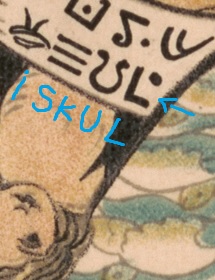

The word "Tagalog" is derived from words which mean "river-dweller" or "native of the river" - which would continue with the water/turtle theme of this section of Oberon's Shield Code. Tagalog was once written in "Baybayin" (which can also mean "coast" or "seaside") and which has one letter in particular that really stands out in relation to all of these topics which is: "YA".
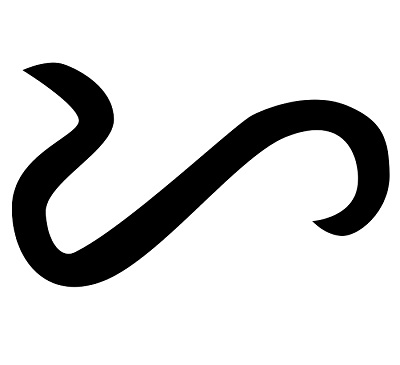
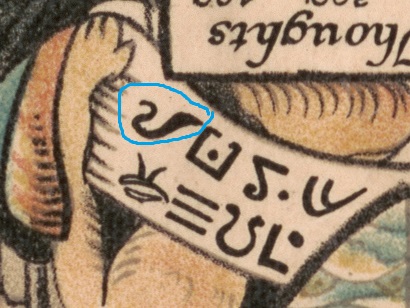
The other letter of interest in this script is the Episilon-like "3" symbol which in this script means "O" or "U" - just like the Omega symbol could have been interpreted as an O or a U.
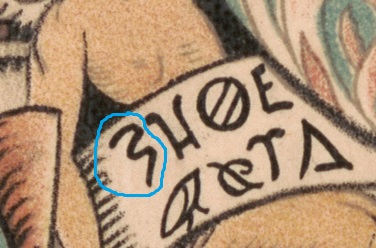

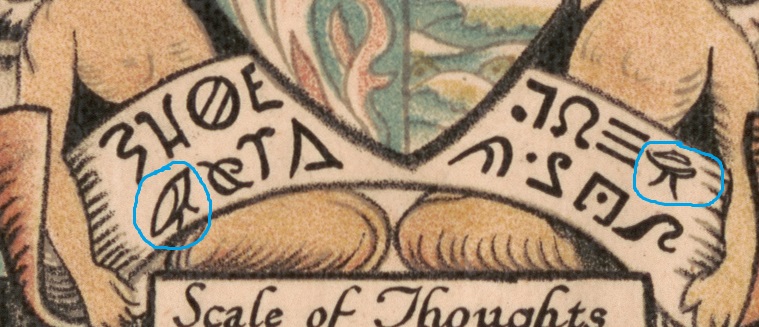
The following image would then be read from the bottom right to bottom left, then up to the "JA" symbol, and across from left to right. This would be a kind of "Ox-Ploughing" technique, and given the letters we have possibly worked out up to this point would read "LUKSIYA - something - AND - something".

In Coptic, the name "Iah" of Ancient Egypt is written: "ⲟⲟϩ" - bringing that same snake-like figure again which we saw as the "YA" symbol in Baybayin. He too is known as "God of Time".
It was IAH as the moon who gambled with Thoth (a form of Hermes/Lucifer) and lost five days of moonlight, thus extending the calendar and enabling the birth of Osiris, Isis, Seth, and Nephthys, whose parents had been forbidden to procreate on any day of the 360 day year.
Coptic has its own interesting letters which very near correspond to these letters, though some of them not quite, such as with its "ALPHA" symbol on the left, here compared to the one from the code rotated by around 180 degrees:

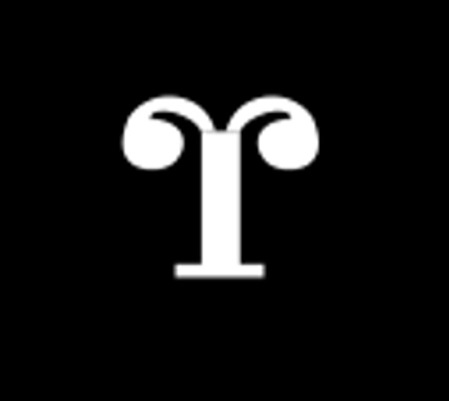

If this symbol follows an "A" or "Alpha" - as it appears to do when read from Left to Right here - it takes on a "V" sound such as "AV". IAV. It may also take on a "W" sound in some cases - which if we include the "I" from the "eye" for "IAW" or "IAV" - we are seeing similar phrases to the name for God or the Egyptian God of the Moon "IAH, JAH, YAH", etc.
The last letter also appears similar to the Coptic "Delta" which can take on a similar sound to the "th" in "this", or "the". Though this symbol also looks quite similar for the Coptic letter "L":

If it were though, we would read: "IAWL" or "IAWTH" or "YAWDH" ("dh" = soft "th" as in "the"). Delta (D/DH) is a closed symbol while the one on the alphabet code is open - perhaps more likely to be indicating the "L" letter. Interestingly "IAITH" or "IEITH" in Welsh can refer to "language", and "EIRIOL" from "AR-IAWL" can mean "prayer" and "supplication", or to "plead" and "intercede". It reminds us of "Ariel" the archangel who guards the Edenic Gate - or "Aries" the fire sign. But "EIRA" also means "snow", so that "EIRIOL" can mean "snow-white", or also "snowdrop". (Snow White on the Faerieland Map does not refer to the most popular tale of the same name - but rather of a German fairy tale "Snow White and Rose-Red" which has a bear who is guarding his treasure from a wicked dwarf).
"IAWL" in Welsh can also mean the "act of glorifying".
On the topic of "water" though - IAUE (if the triangle is to represent the missing vowel of "E"), means "water", "flowing water", or sometimes "river" and is connected with the word "aqua".
"IAU" can also refer to a "yoke" of oxen in Welsh, as well as "younger". Yoke being very close to one possible interpretation of the first word.
Yoke means to "join together". A bow yoke (ˈboʊ) is a shaped wooden crosspiece that gets bound to the necks of usually a pair of oxen. It gets held on by an often U-shaped Ox Bow. These are quite often made of elm, willow, or hickory.
The shape of these are actually very similar to the shape of what the coded writing is written on under Oberon's Shield, as can be seen in this Coat of Arms of Kodisjoki in a comparison:
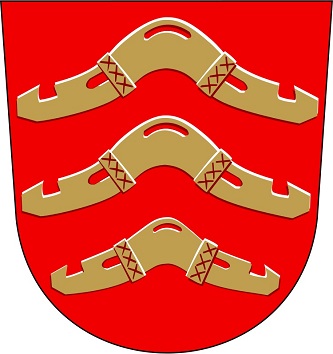




It is interesting that the Chickasaw word for "turtle" (LOKSI) also means "combination lock" - for the fact that the first key revealed is likely the turtle is a symbol of both their "slowness" or "patience" (many of these keys require comprehension of all the stories upon the map and various experiences in the faerie worlds), and also a clear symbol of protection and hiding.
Their shells and their long lives indicate clear protection and concealment of what is sacred. The fact these are drawn upon the "shield" of protection - doubly emphasizes this symbol.
They are also often connected to symbolism of water, the moon, and immortality or long life.
In China there are the "Four Guardians" of the four cardinal directions - one of which is the Black Turtle of the North. The turtles on Oberon's shield are representative of the West - however it is interesting to see this symbol used as Guardians of the Four in other cultures.
There are also various Guardians of the Four Directions in Hinduism called "LOKAPALA".
Presumably it will be important to comprehend the reason why such things are protectors and what information they are guarding - before writing everything onto these pages here - but for now, we will leave the unlocking of the codes upon this shield to the first likely word: "LOKSI" the "TURTLE" and the "COMBINATION LOCK".
We will return to these codes after we have understood a little more of the "Water Realms", of which the turtle is protecting and guarding over.
This story which is found in the "water realms" section of the Map of Faerieland is very much related to the early chapters of my Book of Water - and it relays the meeting of a merrow (merman or mermaid) and going down with it into the ocean and to underground dry land.
"On the far side it was as straight as the wall of a house, and the sea beneath looked so deep that Jack was almost cowed. "Take hold of my tail, and follow after me, and you'll see what you'll see."
In he dashed, and in dashed Jack after him boldly. They went and they went..." - The Soul Cages
"Before I can think any further, she takes my left hand in her right and very lightly encourages me to follow and walk with her to what she calls the "precipice". We soon reach a large cliff face which overlooks the very deep ocean from a great height. Hand in hand, we both take the leap off the precipice and into the ocean below. Upon impact her legs turn into a shining tail. Breathing under the water, I follow the sparkles of her glistening and light pink tail, and swim down with her to the deep secrets below." - The Book of Water - Vol. I
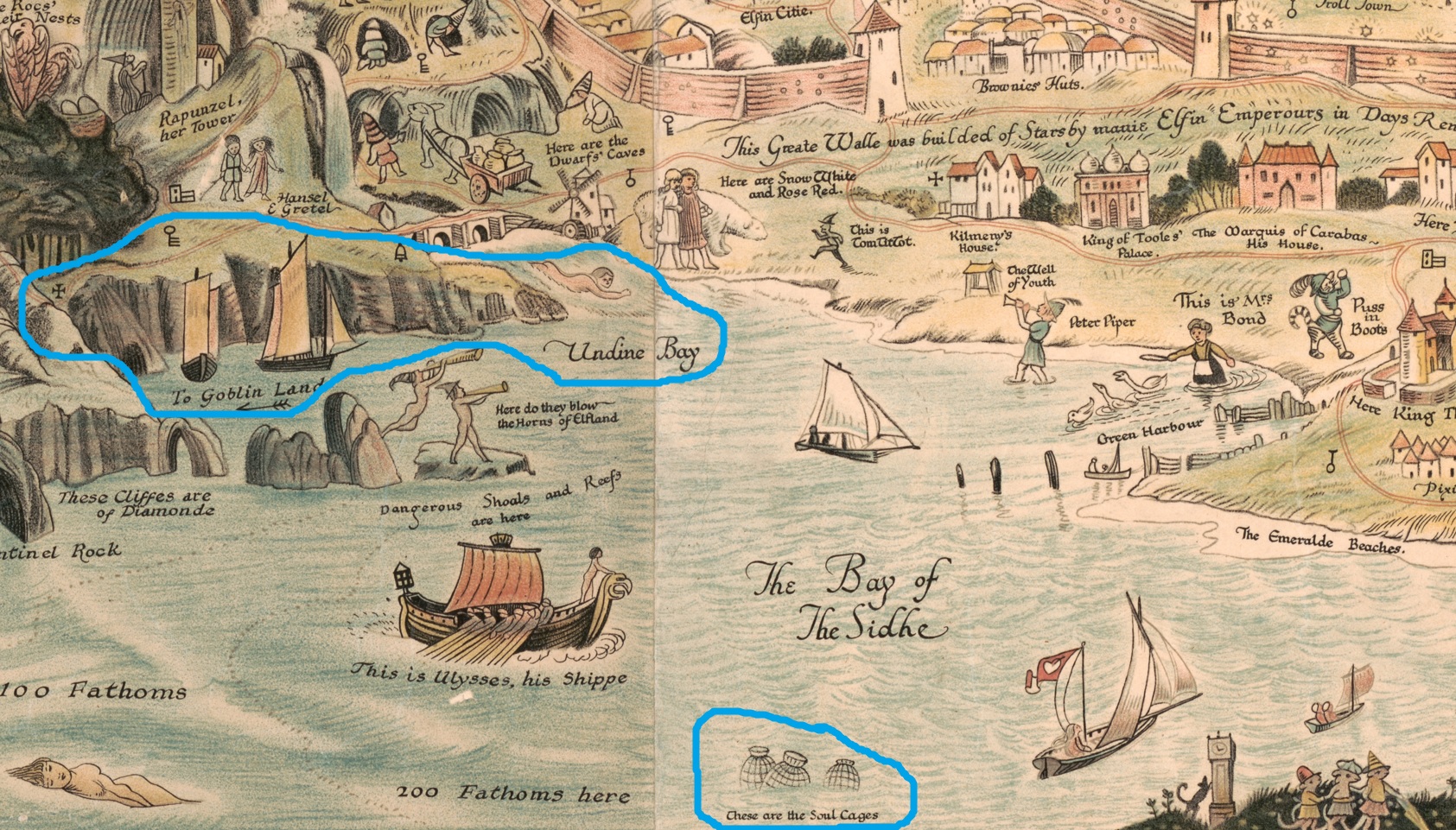
I finished my first days report there with the words "I then wake in physical reality with the strange feeling that my spirit is still residing there just waiting for my awareness to return to it."
Prior to meeting with the woman who led me to the underwater realms - I had already been submerged in the ocean, to the depths of the ocean floor - where I found a large trapdoor with a handle that when pulled, released thousands of spirits, shapes, colors, and faces out into the water as though opening Pandora's Box. The passage itself which I had to move into from this was the size of a grain of sand - meaning that I had to dramatically shrink my own consciousness to a pinpoint size in order to enter this highly secretive and sacred seascape.
This "shrinking" of consciousness to pass through the forbidden barrier/wall - is all signified on the map by the tiny "Water Babies" on the outside of "Shiny Wall" - becoming very small in order to enter the secret pathways to the Ocean Realms.
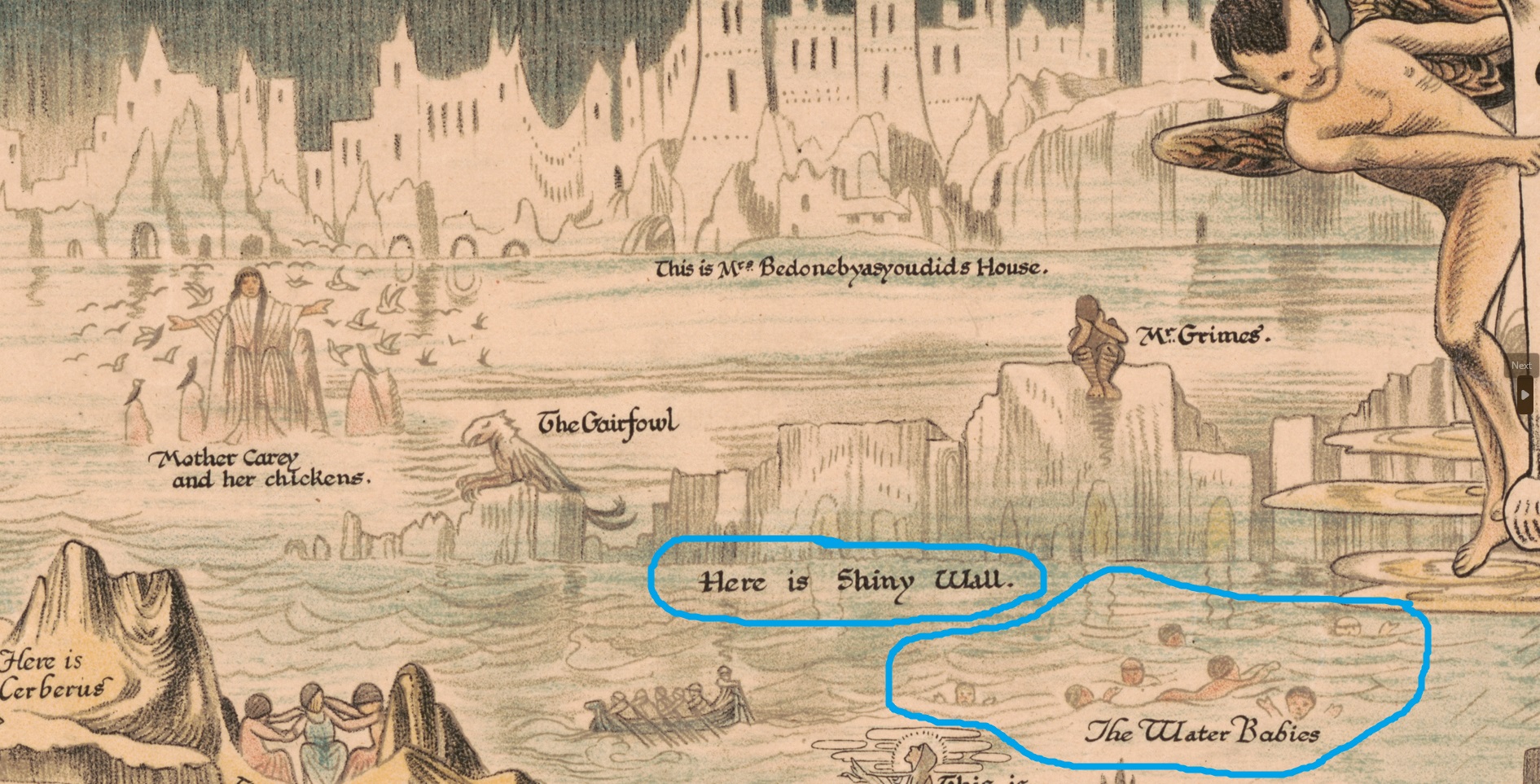
Passing through these and various rocks then eventually will lead you to even deeper seas (depicted on the far bottom left of the faerie map). When you reach the other side of the "Shiny Wall" you are not automatically at the white palace that you can see in the distance - but first you find yourself at the bottom left corner of the map - among the very stormy seas where there are depicted seahorses and chariots and where Neptune is found on the map.
This is a most dangerous and quite unsettling/rough and uncomfortable area to experience.
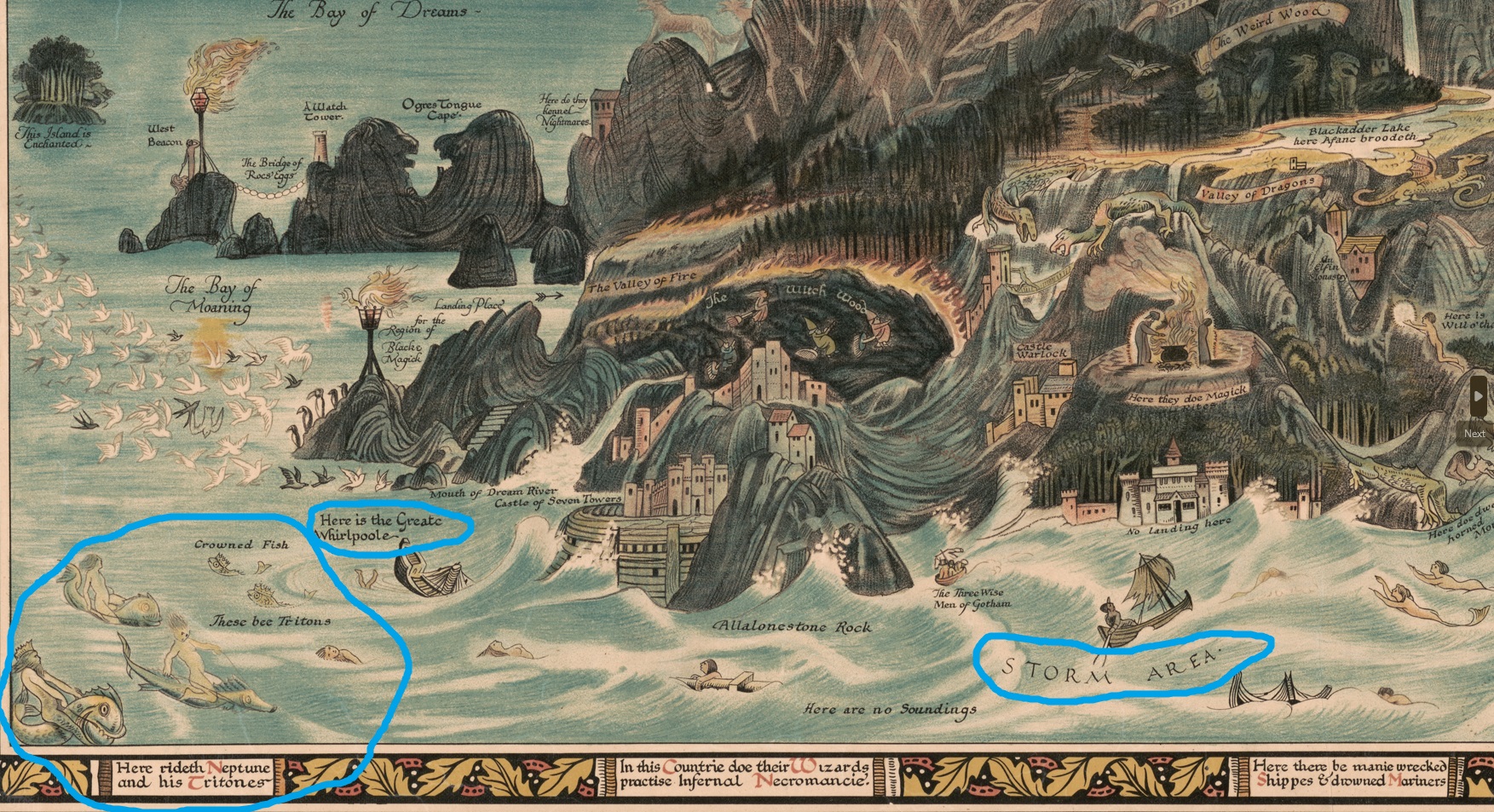
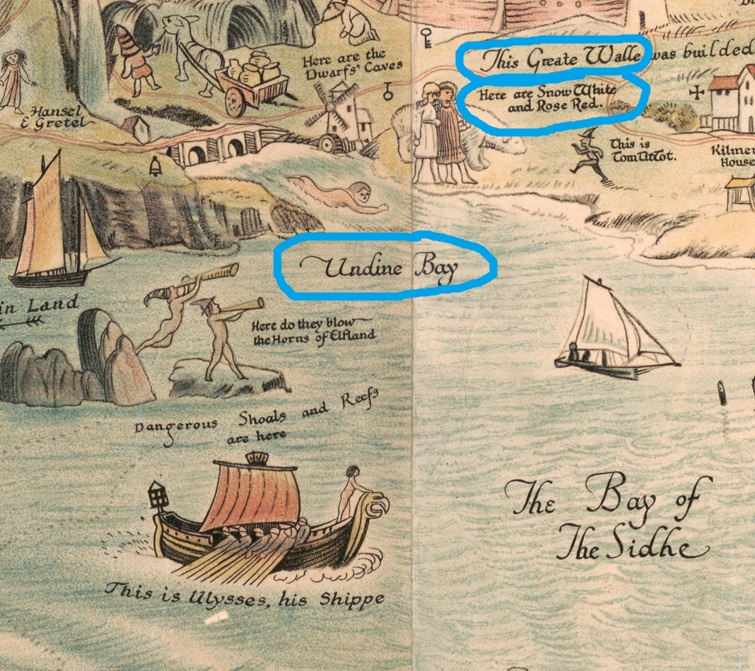
He has also drawn elements of the Earth World here too which is part of the same portal. Each time you return to this same location after having traversed different paths - then this area looks completely different and unlocks new doorways and pathways within its lands.
"I can see bright stars, galaxies, and planetary systems all spinning in an anti-clockwise direction as I soar through space. I also come to realize that there are entirely hidden pathways in the ocean, only accessible by spinning in a very particular way. Eventually we find ourselves back on the shore at the white sand beach, where I had met Pandora, and initially arrived at in the sea chariot before leaping from the precipice. The woman I am with explains the importance to me of cycles, revisiting locations, digging up concealed and ancient treasures at certain moments, and the importance of divine timing and seasons." - The Book of Water - Vol. I
This section is describing this very concept of returning to the "white sand beach" which is represented by "snow white" on the map - and finding it to be entirely different even after traveling through cycles within the Water Realms themselves. The words she told me about digging up "concealed and ancient treasures at certain moments" and with the "importance of divine timing and seasons" also came entirely true - as it was this very same land which later turned out to be the lower portion of the Faerie Emblem (first seen in the stars), as a form of treasure to dig up via the Mount Simele and Japonel story - which led to the treasure at the end of the rainbow and connected to the "dwarf treasure" key on the map - none of which I had been aware of while writing The Book of Water, as I had not yet seen the map.
I also described the "whirlpool" shown on the map as a "spinning portal":
"I see a great and new spiral portal open up to the left side of me in the near distance. It is colorful and shimmering and round. Once we hit the portal all of my surroundings spin rapidly."
- The Book of Water - Vol. I
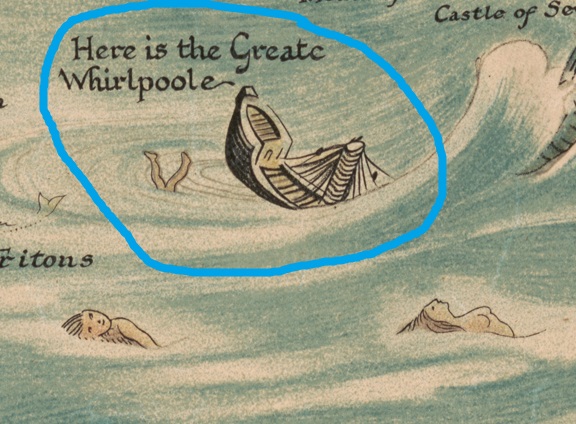
"Prior to entering the green ocean water at the beginning of this book, there is an in-between realm I have described at the end of the “Book of Air – Vol. I” - where there are roses and pathways and gates leading to other places on the outskirts of Murias." - The Book of Water - Vol. I
After going down past the "soul cages" area - you will first lose all sense of direction and then you can make your way beneath the ocean all the way to the top right of the map where the "shiny wall" is and which can only be passed through by making your consciousness a tiny pinprick (represented by the "water babies").
After this you will then find yourself at the bottom left of the map near "Neptune" and the Water Horses - until you arrive at White Sand Beach (this whole portal of sorts between the landscapes is perhaps referenced by drawing the "gairfowl" at the top right of the map, and the "all-alone-stone rock" - where gairfowl is supposed to live - at the bottom left of the map).
From there you can leap off the precipice and swim back the same direction that you came - and this is when you hit the "Here Are No Soundings' location - which takes you so far out of body and mind that you can truly pass beyond the "Shiny Wall" and find yourself back at the top right of the map where you can unlock various jungles and tropical landscapes.
These then eventually lead to the most glorious and beautiful sea city with the white palaces - large hills of green, and the most beautiful surrounding oceans beyond all description.
It is one of the most peaceful and magical landscapes a person might possibly experience.
A guide is near entirely required to unlock these realms - as it would be very difficult alone.
As it says in The Water Babies: "It was many miles down to the sea; and perhaps he would never have found his way, if the fairies had not guided him, without his seeing their fair faces, or feeling their gentle hands."
One of these relevant aspects is the shedding of layers required to enter into these realms. Part of what keeps the region in such peace is that in order to enter, you must become small/renewed like a baby again at first, often even forgetting what came before it.
Comparable perhaps to the Riddle of the Sphinxes in "The Neverending Story" where the only way to get through the third and "no-key gate" is to not want to get through anymore. However the gate before it causes one to lose all sense of identity/memory - thus forgetting that you even needed or wished to get through the gate.
Perhaps not unlike being born on earth... though we would not remember.
"Wise men of old said that everything on earth had its double in the water; and you may see that that is, if not quite true, still quite as true as most other theories you are likely to hear for many a day." - The Water Babies
Tom (in the book) also became so small when he entered the water world, that things which would appear tiny to us were very large to him - and perhaps this is also why the beaches on the Map of Faerieland are so tiny in comparison to what I saw there too - for entire worlds and jungles and landscapes could all be found within these tiny specks - thus being even more cunningly hidden from outside intrusion.
"To see a world in a grain of sand..." - William Blake
There is also mention of him having to swim down and beneath "Shiny Wall" (for seven days) rather than to pass through it - which is also what I referred to in "The Book of Water - Vol. I", specifically when I described Pandora's Box as being the entry point and existing at the bottom of the ocean.
"Eventually deep on the ocean floor I find a large trapdoor of sorts with a big metal and round looped handle on it which I can pull. As the opening is revealed upon pulling at the handle, I see all kinds of small spirits, shapes, colors, demon faces and so on which leap up and out into the ocean as though I have released some darker forces. The words “Pandora's Box” come to mind vividly. Where all the beings have escaped from, there opens a small passage inside which gets smaller and smaller until it is the size of one single grain of sand, a tiny pinpoint of an opening." - The Book of Water - Vol. I.
In the book I describe the whole story of Pandora's Box in detail (in relation to the ocean), which is also referenced in "The Water Babies" - soon after the main character makes it through "Shiny Wall".
There is also mention after making it through "Shiny Wall" of the great fireworks that were used to amuse the ice-fairies there: "now and then he had an exhibition of fireworks, to amuse the ice-fairies. For he would make himself into four or five suns at once, or paint the sky with rings and crosses and crescents of white fire, and stick himself in the middle of them, and wink at the fairies; and I daresay they were very much amused; for anything’s fun in the country."
Reminding me of this chapter in "The Book of Water": "After a second encounter with the famous wizard of this land (who has me look through a telescope out the window to see beautiful displays over the ocean of crumbling and colliding colored stones which are bursting into beautiful powders like fireworks) I then ascend the spiral stairs up to the towers of the palace."
For these types of fun displays are often seen at the large expanse near to the white palace - which is shown in the top right corner of the Faerie Map. This palace and the landscape is not even slightly depicted in its full size or detail. It should also be pointed out that the name "Mrs Be-Done-By-As-You-Did's House" likely refers to the small house seen on the hill as you enter the realm which represents a particular healer woman found in the Water Realms (who is much nicer and far less strict overall than this woman has been depicted in the book) - and she lives in a little cottage along one of the side shell-paths. She can assist in healing us with various natural medicines and so forth - though there is an element of reaping what we sow.
All I share about this location in "The Book of Water" is this: "Nearby is a path made almost entirely of broken shells and which leads around to a cottage-like building among some trees."
I only know of the woman's identity from having visited this location again since writing it. The general tone found around this woman in the Water Babies is not even slightly similar to the type of energy felt in that sacred and magical land - which is one of the most beautiful and most fun landscapes of all the Faerie Worlds.
It is also one of the most secretive - and likely quite intentionally veiled in misinformation.
In the following picture, the blue line refers to the smaller house/cottage of the healer, while the purple line refers to the actual paradise and palace which is beyond words/description:
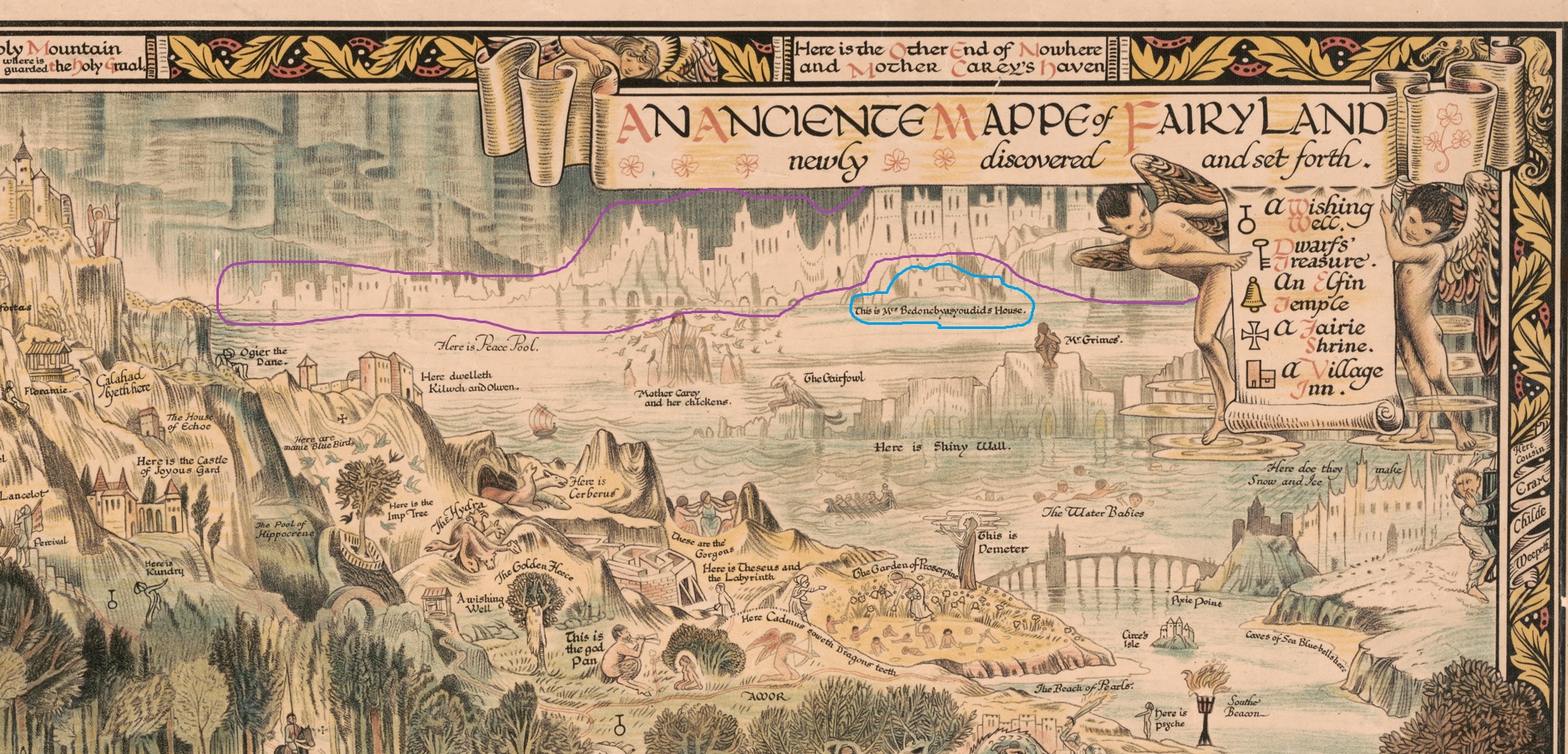
The wizard associated with these realms (called "Semias") is also found in the same palace.
The general "rule" in the land - if it could even be called such a thing (but symbolized by Mrs. Be-Done-By-As-You-Did's House) is similar to that which is found in Ovid's Metamorphoses:
"The Golden Age was first; when Man yet new,
No rule but uncorrupted reason knew:
And, with a native bent, did good pursue.
Unforc'd by punishment, un-aw'd by fear,
His words were simple, and his soul sincere;
Needless was written law, where none opprest:
The law of Man was written in his breast..."
But now let us do away with dull work, in favor of fun, which we all at heart know to be true!
The term "undine" for these elemental beings who are associated with water, was initially used in the works of Paracelsus - especially in his "Book on Nymphs, Sylphs, Pygmies", etc.
In my "Book of Water - Vol. I", there is included an entire Undine Alphabet/Divination System - for communicating with Undine Spirits and bringing their magic from their realm into ours.
Paracelsus describes them as being "both spirit and man, yet they are neither one nor the other. They cannot be men, since they are spirit-like in their behavior. They cannot be spirits, since they eat and drink, have blood and flesh. Therefore, they are a creation of their own, outside the two, but of the kind of both, a mixture of both, like a composite remedy of two substances which is sour and sweet, and yet does not seem it, or two colors mixed together which become one and yet are two. It must be understood further that although they are spirit and man, yet they are neither. Man has a soul, the spirit not. The spirit has no soul, but man has one."
Hence the many stories such as "The Little Mermaid" and "Undine" in which mermaids or fairies seek to obtain a soul - in some cases achieving this by marrying a human with a soul. There are many theories that this is one of the reasons for succubus/incubus attacks, as well as abducted people into the faerie realms, stolen children, and so forth - as though this race of beings are creating a race of hybrids between faerie and human in order to procure souls.
Paracelsus wrote that "they are in everything like men, but without soul, and better than man, for they are like the spirits which nobody can lift. Christ died and was born for those who have a soul, that is who are from Adam, and not for those who are not from Adam, for they are men but
have no soul. So much can be gathered from the Scriptures about them that they must be admitted to be men; but as far as the soul is concerned there is no knowledge of their having one." - though just because there is "no knowledge" of this being so, does not prove this to be the case. It is a theory at best, though one worth pondering over in various contexts.
He concludes that "Therefore, they have not the judgment to serve God, to walk in his path,
for they have not the soul. The beast from inborn nature seeks a just course toward itself, and so do they, but they have the highest reason, above all other animals. Just as man, above all creatures, is closest to God on earth in intelligence and faculties, so they are, among all animals, closest to man and so close that they are called people and men and are held and taken for such, so that there is no difference except in their spirit-like way and in the lack of soul—a queer and marvellous creature,to be considered above all others."
Speaking of the elemental realms, Paracelsus goes on to write that "Their abode is of four kinds, namely, according to the four elements : one in the water, one in the air, one in the earth, one in the fire. Those in the water are nymphs, those in the air are sylphs, those in the earth are pygmies, those in the fire salamanders. These are not good names, but I use them nevertheless. The names have been given them by people who did not understand them. But since they designate the things and since they can be recognized by the names, I shall leave it at that.
The name of the water people is also undina, and of the air people sylvestres, and of the mountain people gnomi, and of the fire people vulcani rather than salamandri. Whatever it
may be, and however the differentiation may be understood, let it stay. Now you must know that if their regions have to be described, they must be divided into their parts."
He goes on writing that: "the undinae have their abode in water, and the water is given to them as to us the air, and just as we are astonished that they should live in water, they are astonished about our being in the air. The same applies to the gnomi in the mountains: the earth is their air and is their chaos. For everything lives in chaos, that is: everything has its abode in chaos, walks and stands therein. Now, the earth is not more than mere chaos to the mountain manikins. For they walk through solid walls, through rocks and stones, like a spirit; this is why these things are all mere chaos to them, that is, nothing. That amounts to: as little as we are hampered by the air, as little are they hampered by the mountain, by earth and rocks. And as it is easy for us to walk through air and air cannot stop us, so rocks and cliffs are easy to them. And so, things are all chaos to them which are not chaos to us. For a wall, a partition, stops us so that we cannot go through, but to them it is a chaos. That is why they walk through it; to them it is their air in which they live and walk, as man does in the air that is between heaven and earth."
Speaking on the relationship of those beings to the elements he continues: "Since water is the fish’s air, the fish does not drown, and so the unda does not drown either. As in the water, so in the earth: the earth is air to the gnomi; hence they do not suffocate. They do not require our air, we do not theirs. Thus also with the salamanders: fire is their air, as our air our air is. And the
sylvestres are closest to us, for they too maintain themselves in our air, and they are exposed to the same kind of death as we, namely: they burn in fire, and we too; they drown in water, and we too; they suffocate in the earth, and we too."
He also goes on to explain that because the gnomes of the earth for example, see and walk through earth just as we do the air - that therefore the sun can reach them directly through the earth in ways which would be complete darkness to us.
In speaking on the nature of spirits and of men, Paracelsus wrote: "The spirit goes through
all walls and nothing locks him out; man, however, not, for he is locked out by the bolt or lock."
And this brings us back to our discussion on the hidden lettering on the Map of Faerieland.
In a vision this morning, Hermes spoke the word "SAH" to me - and I saw it in my mind. Not having any idea what this might mean - I soon discovered to my surprise that it is the name of an Ancient Egyptian God - though particularly and most interestingly being the consort of SOPDET (Goddess of Sirius).
Interestingly this also brings us back to the "OX" symbolism, due to the fact that the letter "A" was said to initially have been "cow/ox horns" (upside down), which is also the meaning of the first letter of the Greek alphabet "ALEPH", derived from the West Semitic word for "OX". The letter "S" has also been seen as a snake/serpent - connected with "hissing" both in shape and sound - with the Hebrew letter "Samekh" been drawn much like an "ouroboros" symbol.
This brings us bac
The letter "Æ" has also been called "ÆSC" in Old English Latin, after the Ansuz Rune (ᚨ) - the significance of which we have described elsewhere. Ansuz is also the "A" rune - likely being derived from the Phoenician "ALEPH".
This brings us also to "ASGARD" ("Enclosure of the Æsir") - being the home of the gods. This realm is heavily guarded. Yggdrasil is said to be a central tree in Norse Cosmology from which all else in the Nine Worlds exist around or are connected to.
Old Norse "āss" actually means "god" - which interestingly when read backwards would read "Ssa" or "Sah" - being the name of the Ancient Egyptian God of Sirius. Sirius being the "dog" star which is also "god" backwards. Old Norse "garðr" means "enclosure" or "fence" - which in a sense is saying the Enclosure of God, or where God is protected/guarded/enclosed. Perhaps also "Ash-Guard" being where the Cosmic Tree resides.
"áss" in Old Norse can also mean a "pole" or a "beam" or a "sapling" which "grows" - possibly again in reference to the Ash Tree which holds up all the worlds and continues to evolve. Perhaps it also worth considering the meaning of "beam" in forms of light and eyesight too.
The Proto-Germanic word "Ansaz" (very similar to the Rune Ansuz), means "beam" as well.
Perhaps connected with "Amsaz" for shoulder, and Latin "asser" for beam. The name I was given for "Osiris" in the Faerie Worlds was also "Asaar" - and this is who "Sah" later came to be associated with.
"Ansuz" is also a Proto-Germanic term meaning "God", related to a word meaning to "beget" or "engender" - or Sanskrit "ásu" which is "spirit, life-force, life", etc. If we are speaking of this life-force and beginning spiritual energy of creation and the "word" - beginning with the first "Aleph" - in relation to the "ash tree" - perhaps it brings new meaning to: "ASHES TO ASHES".
The Northern Kurdish term for "Earth, Soil, Matter and DUST" is quite interestingly "AX".
Perhaps also worth considering here is the term "AXIS" for the wheel (or central part of which branches are arranged in botany), the balance-beam, or the word "AXEN" which means to "ASK/REQUEST/PRAY".
"ASK and you shall receive..."
Axen is a form of desiring, wanting, praying, and searching. And why did Jesus ride an ass?
When we
In Finnish the word "Ansas" means "tress" - being an architectural triangle shape of straight beams of wood forming the structure - such as in a roof or a bridge (reminding us of the "SHARP" triangle of Sirius). The "Sekhmet" letter we have already described also is supposed to mean "Pillar/Support". ASH is "burnt matter" - the secret/sacred fire of the creative verb?
An alternative form of "AXEN" for "to ask" is "OXEN" - bringing us back to the same premise. Oks/Oksa = "branch/bough" - but also "Ox/Bull".
And God breathed OXY-GEN into Adam's nostrils. And "oxús" means "SHARP", génos "BIRTH".
The seeds of the Ash Tree are called "KEYS" and these are a type of fruit called "SAMARA" or "helicopters". Interesting too in that Buddhism has its great "Wheel of SAMSARA" - being the spinning or rotating cycles of life, death, and transformation.
Many of these words also come back to the words "SPEAR/POLE/SHAFT" etc.
The first two humans created by God in Norse Mythology were called "Askr ok Embla", being Ask and Embla (male and female respectively, as we have Adam and Eve). The name "ASKR" literally means "ASH TREE". Whether "Embla" is connected with "Ember" at all is unknown.
Presumably the Ancient Egyptian God's name "SAH" was also written without vowels in which case it would be "SH".
In Norse Cosmology the central and sacred tree of the Nine Worlds is the Ash Tree - called "YGGDRASIL" (with "YGG" being pronounced similar to "EGG").
ASGARD backwards is interestingly "DRAG-SA", and though there has been much speculation on the meaning of YGGDRASIL (drasil partly from *dʰer- (“to hold, support”), sometimes the idea that "Yggr" can mean "terror", etc) - all of which carry their own interesting potentials and connections - there are also some intriguing possibilities connected with dragons, eggs, and birth/creation which appear to be hid in this word.
The letter "Y" itself is obviously very sacred and connected with three-point crossroads too - but we see it at the beginning of Yeshua, Yahweh, Yew, etc. It is the only "in-between" letter considering that it is not entirely a consonant, nor entirely a vowel - so represents well this in-between nature of different realms.
The letter "Y" also used to appear much more like the staff of a wizard with a circle atop.
It is also a very sexual symbol with either the union of male and female, or simply a female. When an "algiz" rune is created in form through the sexual act - then the rune becomes "life/birth" - which is why the upside down algiz rune (as seen on modern peace symbols) was actually once used as a symbol of death.
The word "æg" or "egg" in Old Norse is related to "edge" (such as the sharp edge of an axe) - but also to "ovum". Proto-Indo-European *h₂ōwyóm (“egg”), has been argued to have been a derivative of *h₂éwis (“bird”), which is also related to ᾱ̓ετός (āetós, “eagle”). The World Tree has an unnamed eagle sitting atop it - with a serpent/worm or dragon lying at the bottom.

But -sil can also be connected with "seed, semen, cause, origin, race, offspring, breed, birth" and so on - bringing all of these concepts together back to their central source of all creation. Ash trees can themselves be either male, female, or hermaphroditic.
As earlier mentioned, Ash Trees have "winged seeds" which produce many fruits (or "keys") called "samara". There are a few other trees which have this too such as the Maple, the Elm, and the Sycamore. The winged seeds of the vine maple for example can be seen here below, with a comparison to the wings on Hermes staff/helmet:
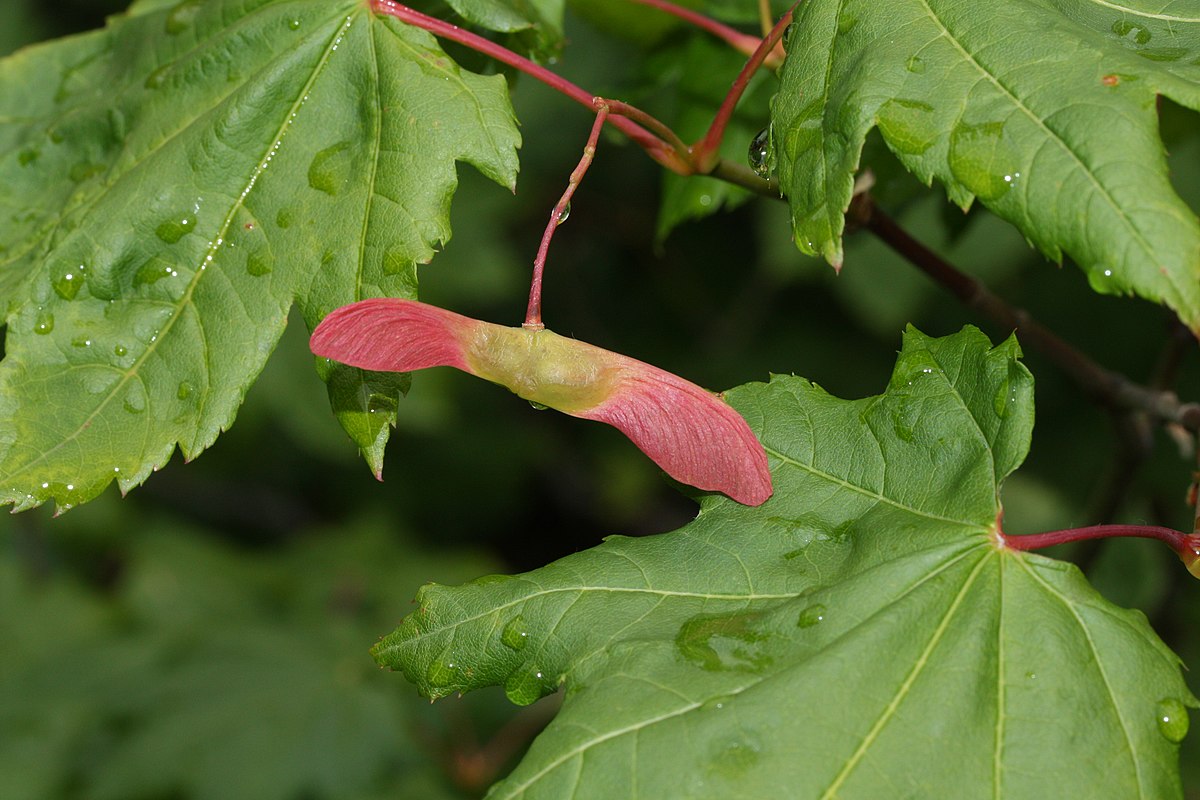
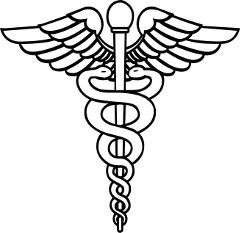
An ancient name for Faerieland is "Elfhame", which in Old Norse is spelled "Álfheimr" from "heim" being "home". Old English hama, homa is a "cover" or "skin" - serving a similar purpose as a "covering" or "helmet". For example "*hamô" is "clothes" or "skirt". *haimaz is "home, village". To "hem" something is to put a border or edge on it - just as Hermes guards the borders of the land - or is associated with the stones used to build the homes or statues. He is often depicted as wearing a helmet and protecting the gifts of intelligence and the will.
Also worth considering is the term "hamr" meaning "skin, slough" (as in a slippery snake skin or discarded snake skin) - as well as "shape" and "form" - the ability to change ones shape.
Hence "hammer" which changes the shape of metal or stone.
In Swedish, "hamn" is also a port, dock or harbor, but can also refer to the outer shell/form.
Another interesting term to ponder is "alms" which people give as offerings or charitous gifts - this is related to the term "mercy/pity" - Mercy being connected with Mercury who is associated with Merchandise.
"Elme" in Old French is also an alternate form of "Helme" from Medieval Latin "Helmus" or "Helmet" - the wings upon which Hermes is also often depicted as wearing on his head. The helmet also perhaps representing that which he covers/hides/protects and holds the key to.
